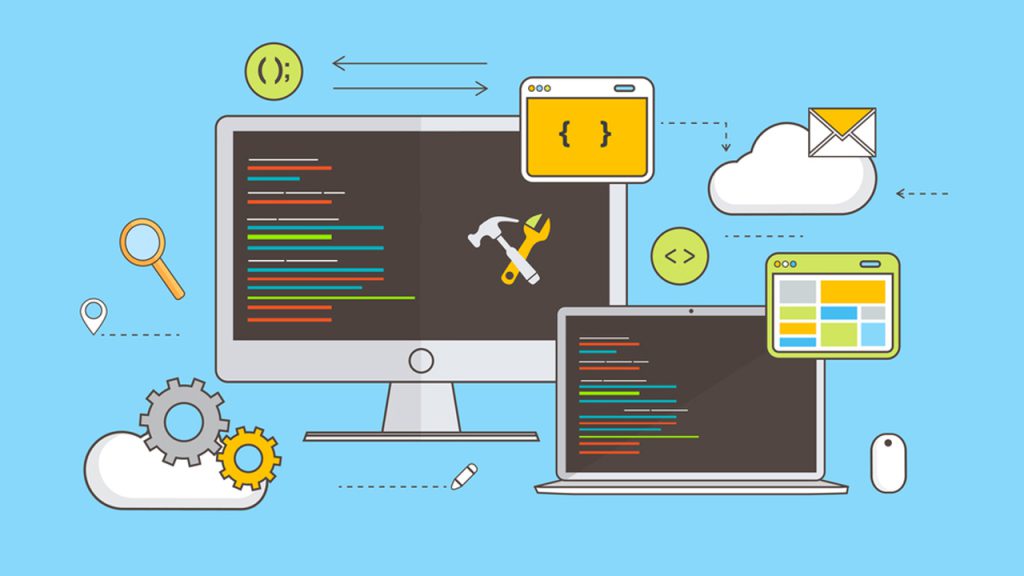In this article, we want to answer this question: Why is C still important? The C programming language has been used since 1972. But isn’t this against technology? I mean, in the world of technology, things quickly replace others, but not with C. Over the decades, many programming languages have emerged, some of which were created exclusively to compete with C, but the result of such work, as we see today, is that C is unbeatable.
Although many people believe that the C language should be retired, still after such a time, no high-performance C language has been created. On the other hand, many existing programming languages are derived from C. In the following, we will discuss the presence of C alongside modern programming languages. By comparing these cases with each other, we can conclude whether the presence of C is still justified or not.
C VS C++
C++ can be considered a much more advanced version of the C language. C++ can do much more than C and has more development options. Namespaces, templates, exceptions, automatic memory management, etc., are features that C++ offers compared to C. Projects that require high performance and communicate a lot with the processor or graphics card are usually written in C++.

On the other hand, C++ is a language that is developing and expanding; Something we don’t see in C. Newer features are added to C Plus Plus over time, which is one of the strengths of this language. But the problem C++ has against C is its vast complexity. Many developers decide to use a more minimal tool like C to do most of their jobs.
Take the Linux development team as an example; they use C entirely. On the other hand, for tasks such as kernel writing, C language provides much more efficiency and speed than C Plus Plus, which is a very important issue. It should be kept in mind that C++ offers many higher-level features than C, but what is the reason for using C++ if a more minimal option like C is going to get you started?
C VS Java
Although today’s modern applications are built using Java, this language remains the primary tool for enterprise application development after several decades. We can mention most of the Apache Foundation projects.

Java syntax is heavily derived from C++ and C. Unlike the C language; Java is not converted to native codes. Instead, Java uses its execution environment called JVM. By using the Java virtual machine, you will be able to run Java codes anywhere. On the other hand, C programs need a certain amount of configuration to be fully executed in different operating systems. The combination of portability and high performance makes Java a very suitable language for creating various applications.
But despite all these issues, Java is not a suitable language for lower-level tasks because it does not have direct access to hardware and uses a virtual machine to run. Therefore, it has relatively heavier programs and cannot be suitable for tasks that require the last level of optimality. C codes are directly converted into machine language, and for this reason, they can be used to write more optimal programs for computers.
C VS C# and .NET
Almost two decades have passed since the creation of C# and the .NET family, and it is the most popular technology for developing enterprise applications after Java. C# itself inherited many features from Java. Therefore, the advantages mentioned in the previous section can be repeated here.
In recent years, the .NET operating environment was able to be present in different operating systems, and based on this, C#, as the main language of this family, like Java, found the ability to run on different platforms. One of the main features of Java is JIT, or just-in-time compilation, which optimizes the written code. You can find such a feature in the C# language as well. It is not possible to do this in C language.
One of the advantages that C# offers over Java is the ability to access memory directly. In this case, the developer can work manually to optimize the efficiency of the codes. But again, this accessibility has certain limitations compared to the C language. Therefore, C can still be seen in some tasks.
C VS GO
Go is one of the most similar languages to C. So that programmers who understand C language can easily go through Go as well. This does not mean that in terms of performance Go is equal to C. Go provides high-level features, among which we can mention the package management system and namespaces.

One of the main goals of Go’s creators is to keep it as readable as possible. Working with C language code is somewhat difficult, but Go has solved this problem. On the other hand, many features in Go, such as concurrency and goroutines, are either not available in C language, or if they are, they need to be implemented manually.
Like C#, Go has the necessary capabilities to access memory. This is done in Go through the unsafe package. Using this package based on the basic rules of Go is not very correct because the created application may not be safe.
Despite all the great features that Go provides, it is still unsuitable for kernel writing, driver writing, and other low-level tasks. For this reason, it still has shortcomings that justify using C language.
C VS Rust
Among the existing languages, Rust can be considered the closest language to C because it can manage memory, convert lines of code to machine codes, have high performance, etc. By default, a safe mode is considered for memory so that developers do not face common problems. Although Rust produces safer and less buggy code than C, its speed and efficiency are not suitable.
Compared to C, Rust shows less flexibility in memory management and access to lower-level features. On the other hand, despite the high power it gives to developers, C has a very small volume and is even less complex. But just like C++, despite its high power, Rust can be simpler in some situations.
C VS Python
Nowadays, it is impossible to talk about software development anywhere and forget Python. Python seems to be everywhere. There are many reasons for this, but the high flexibility and usability that Python provides may be the reason for its popularity.

The opposite point of Python and C is in the time of development and execution. Python has a very fast development routine, but it is slow in execution; in contrast, C has a slow development routine but is very fast in execution. Since modern hardware has greatly improved, Python is fast enough to handle all tasks. So there is no problem with this.
In Python, memory management and program performance are managed automatically. Therefore, the developer does not have access to the lower levels of hardware. The relationship between Python and C is not the same as that between other languages because Python’s execution environment is actually written in C. Many libraries run in Python but are actually developed in C. Since Python was developed with C, there is no need to explain the urgent need for C language.
Final Word
Recall the title. Why is C still important? I’m sure you can answer it.
We covered different topics, and we know that C language can be considered the mother of today’s modern languages, and the world of software without C language would be almost meaningless. Therefore, it is very important to understand C language. If you would like to learn C, here is a complete C programming course that can help you.



